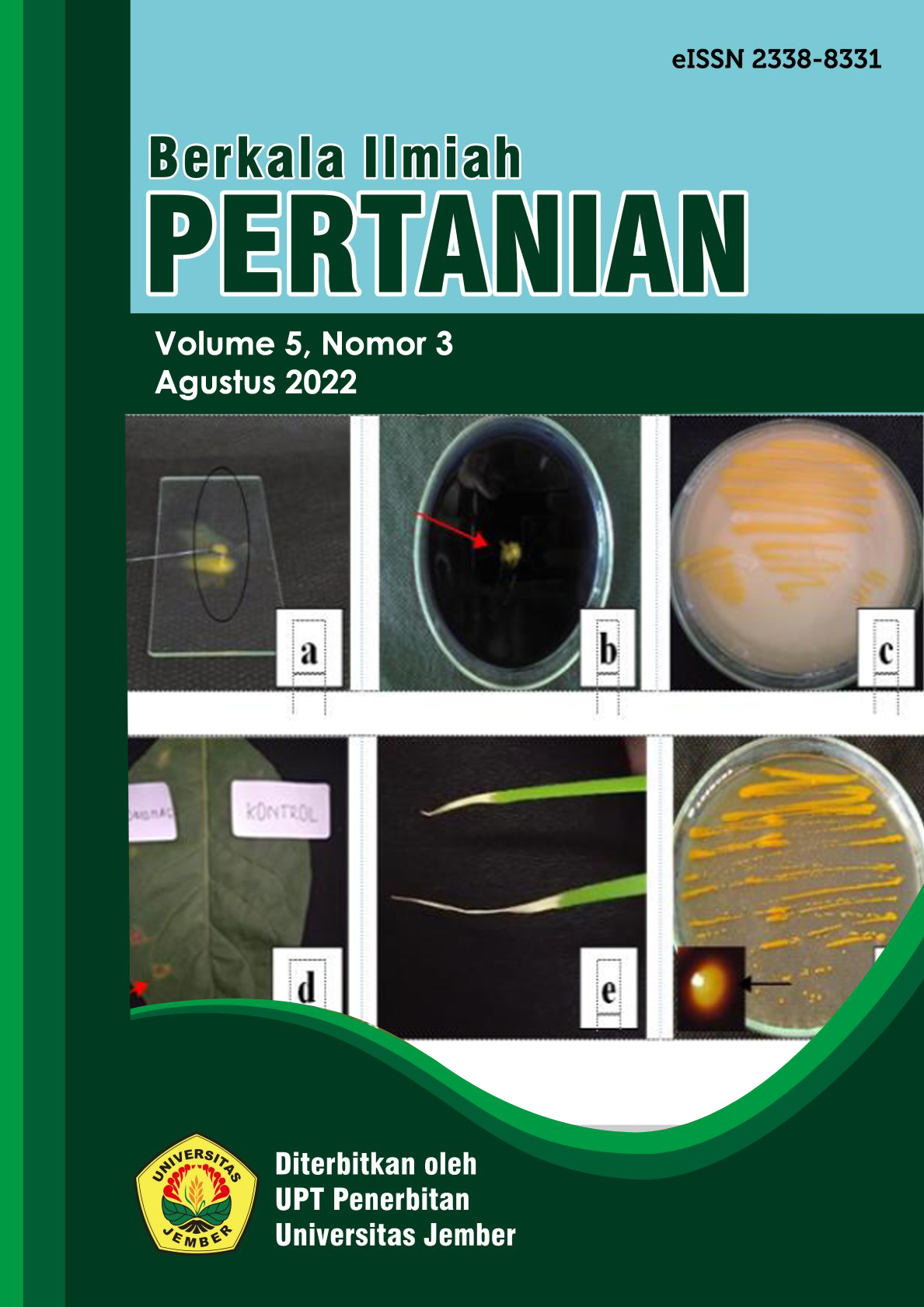The Effect of POC (Shame Plant Root LOM) and Coconut Water on Growth and Result of Pakcoy Plants (Brassica rapa L.)
DOI:
https://doi.org/10.19184/bip.v5i3.15657Abstract
Mustard pakcoy plant is one of the vegetables which is much in demand by society. For the sake of society's awareness of the importance of a healthy plant, it is necessary to develop healthier mustard pakcoy plants. That effort can be done by taking the advantages of organic materials such as organic fertilizer, a natural hormone, organic pesticides, and so on. This research aimed to find out the productivity improvement of mustard pakcoy plants by applying LOF (shame plant root LOM) and coconut water. This research was conducted in Antirogo Village Sumbersari District Jember Regency starting from May 2019 to July 2019. The method used in this research was a 2-factor-Completely Randomized Design (CRD) factorial in the design with 3-time repetitions. The first factor, 4 concentration levels of shame plant LOM, the second factor, 3 concentration levels of coconut water, so the total number of plants used is 36 plants. Data obtained was analyzed using ANOVA and if there was a significant or highly significant difference of treatment effect, the advanced test was conducted by using Duncan's multiple range test (DMRT) at the level of 95%. Based on the research results, it showed that the application of LOF (shame plant LOM) and coconut water had a highly significant effect on the parameter of fresh weight of the plant with the total weight of 645.15 gr/plant, while the single factor of the application of LOF (shame plant LOM) and coconut water had a significant effect on the parameter of plant height, number of leaves, chlorophyll content. At the single factor of coconut water treatment, it had a significant effect on the N networks.
Downloads
Downloads
Published
Issue
Section
License
Authors who publish with this journal agree to the following terms:
1.Authors retain copyright and grant the journal right of first publication with the work simultaneously licensed under a Creative Commons Attribution-NonCommercial 4.0 International License that allows others to share the work with an acknowledgement of the work's authorship and initial publication in this journal.
2.Authors are able to enter into separate, additional contractual arrangements for the non-exclusive distribution of the journal's published version of the work (e.g., post it to an institutional repository or publish it in a book), with an acknowledgement of its initial publication in this journal.
3.Authors are permitted and encouraged to post their work online (e.g., in institutional repositories or on their website) prior to and during the submission process, as it can lead to productive exchanges, as well as earlier and greater citation of published work (See The Effect of Open Access).




















